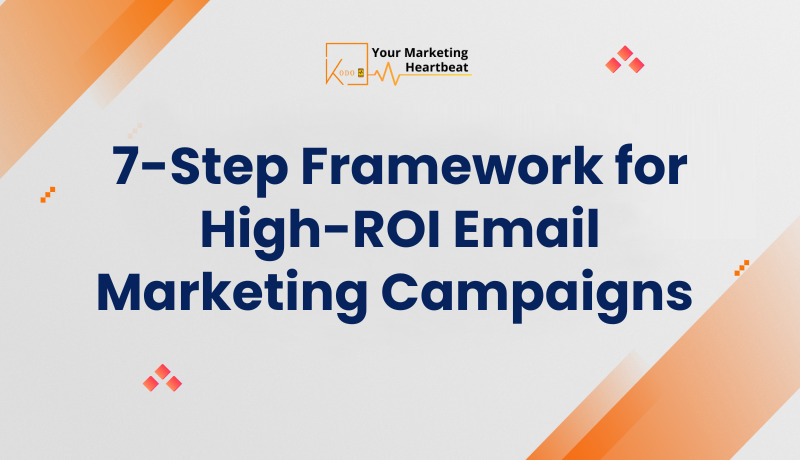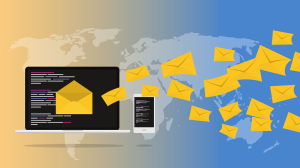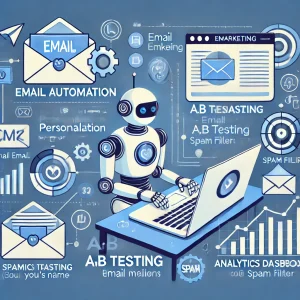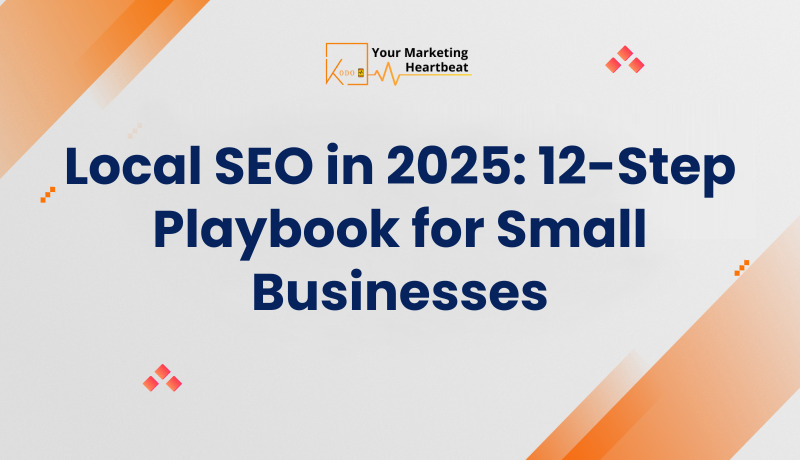

In today’s digital landscape, email marketing remains a powerhouse for businesses seeking to connect with their audience and drive conversions. With an average return of $42 for every dollar spent, it’s clear that email marketing campaigns can significantly boost your bottom line. However, achieving such impressive results requires more than just crafting compelling messages; it demands a strategic approach to email marketing campaign management. In this comprehensive guide, we’ll explore a 7-step framework for email marketing designed to maximize your email marketing ROI and elevate your overall email marketing strategy.
Email marketing’s potential is undeniable, but without proper email marketing management, even the most brilliantly crafted email marketing campaigns can fall flat. Whether you’re a seasoned marketer or just starting out, this email marketing framework will provide you with the tools and insights needed to create, execute, and optimize high-performing email marketing strategies. From setting clear objectives to leveraging advanced analytics, we’ll cover everything you need to know to transform your email marketing efforts into a revenue-generating machine.
Let’s dive into the 7-step framework that will revolutionize your approach to email marketing and set you on the path to achieving exceptional ROI.
The foundation of any successful email marketing campaign lies in setting clear, measurable objectives. Without a well-defined goal, your efforts may lack focus and direction, ultimately leading to subpar results. Here’s how to establish robust campaign objectives that align with your overall business strategy:
Begin by asking yourself what you want to achieve with your email campaign. Are you looking to:
Your primary goal will serve as the North Star for all subsequent decisions in your campaign planning and execution.
Once you’ve identified your primary goal, it’s time to make it SMART: Specific, Measurable, Achievable, Relevant, and Time-bound. For example, instead of a vague goal like “increase sales,” a SMART objective might be:
“Increase sales of our premium subscription plan by 15% among existing customers within the next 30 days through a targeted email campaign.”
This objective is:
Ensure that your email campaign objectives support your broader business goals. This alignment will help you demonstrate the value of your email marketing efforts to stakeholders and justify resource allocation.
When setting objectives, take into account your target audience’s needs, preferences, and behavior. This consideration will help you create more relevant and effective campaigns that resonate with your subscribers.
Setting achievable goals will help maintain team morale and provide a solid foundation for future growth.
By taking the time to define clear, strategic objectives for your email marketing campaigns, you’re setting the stage for success. These objectives will guide your decision-making throughout the campaign process, from content creation to audience segmentation and beyond. Remember, well-defined goals are the first step towards achieving high ROI in your email marketing efforts.
Once you’ve established clear objectives for your email marketing campaign, the next crucial step is to segment your audience. Effective segmentation allows you to deliver more personalized, relevant content to your subscribers, significantly increasing engagement and conversion rates. Let’s explore how to implement a robust segmentation strategy that will elevate your email marketing ROI.

Before diving into the specifics, it’s essential to recognize why segmentation is so critical:
To segment effectively, you need robust data. Here’s how to gather the information you need:
Once you have collected sufficient data, create detailed profiles for each segment. These profiles should include:
Establish clear rules for how contacts will be assigned to different segments. These rules should be:
When implementing segmentation strategies, it’s crucial to adhere to data protection regulations like GDPR. Ensure that you:
By following these segmentation best practices, you’ll be well-equipped to create highly targeted, personalized email campaigns that resonate with your audience. Remember, effective segmentation is an ongoing process that requires regular analysis and refinement. As you continue to learn more about your subscribers, you’ll be able to create increasingly sophisticated segments that drive higher engagement and, ultimately, better ROI for your email marketing efforts.
With clear objectives set and your audience segmented, the next critical step in our high-ROI email marketing framework is crafting compelling content and design. This step is where creativity meets strategy, and it’s essential for capturing your audience’s attention and driving them towards your desired action. Let’s explore how to create email content that resonates with your subscribers and supports your campaign goals.
Before you start writing, revisit your campaign objectives. Every element of your email content should support these goals. For example:
Your email should immediately communicate the value it offers to the recipient. Ask yourself:
Clearly articulate this value proposition in your subject line and opening paragraph to grab attention and encourage further reading.
The subject line is your first (and sometimes only) chance to capture your audience’s attention. Here are some tips for crafting effective subject lines:
Most people don’t read emails word-for-word; they scan for relevant information. Make your emails easy to digest by:
By focusing on creating compelling, personalized content and pairing it with an appealing, functional design, you’ll significantly increase the chances of your email campaign achieving its objectives. Remember, the key is to provide value to your subscribers while guiding them towards your desired action. Continuously test and refine your approach based on performance data to improve your results over time.
Even the most brilliantly crafted email campaign won’t yield results if it doesn’t reach your subscribers’ inboxes. That’s why optimizing email deliverability is a crucial step in our high-ROI email marketing framework. Deliverability refers to the ability of your emails to successfully land in recipients’ inboxes rather than spam folders or being blocked entirely. Let’s explore strategies to ensure your emails consistently reach their intended audience.
Before diving into optimization techniques, it’s important to understand the key factors that influence email deliverability:
Your sender reputation is crucial for deliverability. Here’s how to establish and maintain a positive reputation:
Email authentication helps ISPs verify that your emails are legitimate. Implement these authentication methods:
Content quality significantly impacts deliverability. Follow these best practices:
By implementing these deliverability optimization strategies, you’ll significantly increase the chances of your emails reaching your subscribers’ inboxes. Remember, deliverability is an ongoing process that requires constant attention and adjustment. Regularly review your deliverability metrics and stay informed about industry best practices to ensure your email campaigns continue to perform at their best.
In today’s fast-paced digital marketing landscape, automation and personalization are key to scaling your email marketing efforts while maintaining a high level of relevance and engagement. This step in our high-ROI email marketing framework focuses on leveraging technology to deliver timely, personalized messages that resonate with your audience. Let’s explore how to effectively implement automation and personalization in your email campaigns.
Email automation allows you to send targeted messages to subscribers based on specific triggers or time intervals. Benefits include:
To create an effective automation strategy:
Personalization goes beyond just using a subscriber’s name. Implement these personalization techniques:
Utilize data from various sources to create highly personalized experiences:
By implementing robust automation and personalization strategies, you can significantly enhance the effectiveness and efficiency of your email marketing efforts. These techniques allow you to deliver highly relevant, timely content to your subscribers, fostering stronger relationships and driving better results. Remember to continuously test, learn, and refine your approach to ensure your automated campaigns remain fresh and impactful over time.
In the realm of high-ROI email marketing, continuous improvement is key. This step focuses on leveraging data and insights to refine your email campaigns and boost their effectiveness over time. By implementing a robust analysis and optimization process, you can identify what’s working, what isn’t, and make data-driven decisions to enhance your email marketing performance. Let’s explore how to effectively analyze and optimize your email campaigns.
![]()
Before diving into analysis, ensure you have a solid measurement framework in place:
Regularly track these essential email marketing metrics:
Look for patterns in subscriber behavior to inform your strategy:
Create a systematic process for ongoing campaign optimization:
By implementing a robust analysis and optimization process, you can continuously improve the performance of your email campaigns. Remember that optimization is an ongoing journey, not a destination. Stay curious, be willing to experiment, and always let data guide your decision-making. With this approach, you’ll be well-positioned to achieve and maintain high ROI from your email marketing efforts.
In the final step of our high-ROI email marketing framework, we focus on the critical aspects of legal compliance and trust-building. As email marketers, it’s essential to not only follow legal requirements but also to establish and maintain trust with your subscribers. This trust is the foundation of long-term success in email marketing. Let’s explore how to ensure compliance and build trust through your email campaigns.
Familiarize yourself with key email marketing regulations that may apply to your business:
Ensure your email marketing practices adhere to these common compliance requirements:
Create a comprehensive privacy policy that outlines:
Make this policy easily accessible on your website and link to it in your email footer.
Protect your subscribers’ data with robust security practices:
Be open and honest about your data practices:
Maintain consistent branding across all touchpoints:
A well-structured email marketing strategy is essential for maximizing ROI in 2025. By leveraging email automation, personalization, and list segmentation, businesses can create highly targeted campaigns that drive engagement and conversions. Additionally, ensuring GDPR compliance, optimizing cold outreach templates, and continuously refining strategies through A/B testing and analytics dashboards will help marketers stay ahead of the competition. As email marketing continues to evolve, focusing on quality content, deliverability, and audience preferences will be the key to sustained success.



April 23, 2024